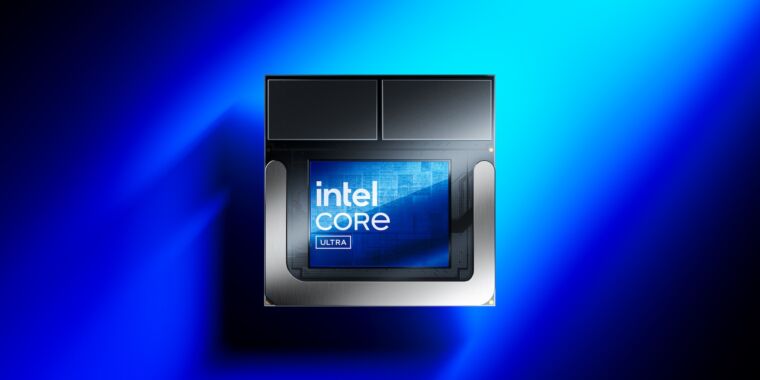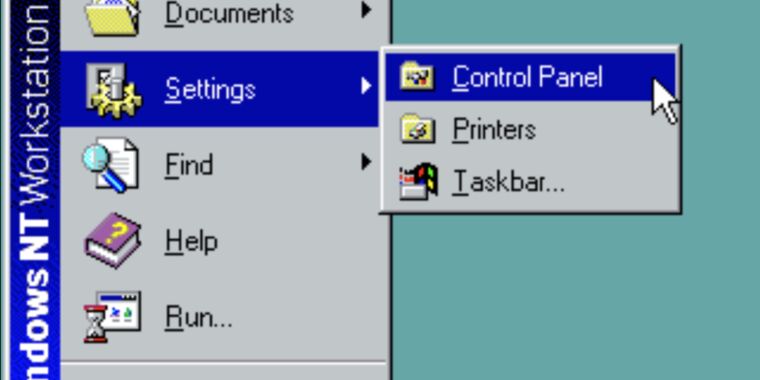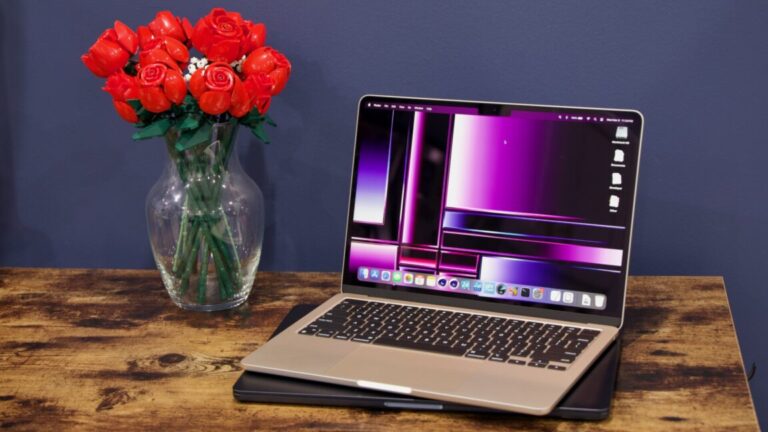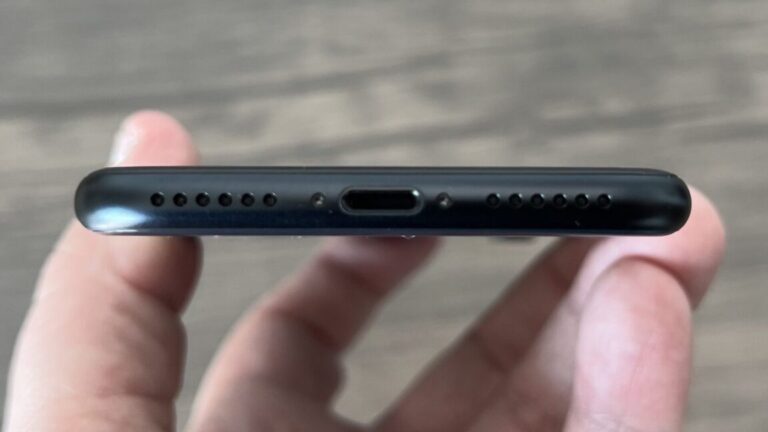Intel announces first batch of second-gen “Lunar Lake” Core Ultra laptop CPUs
Intel
Intel has formally announced its first batch of next-generation Core Ultra processors, codenamed “Lunar Lake.” The CPUs will be available in PCs beginning on September 24.
Formally dubbed “Intel Core Ultra (Series 2),” these CPUs follow up the Meteor Lake Core Ultra CPUs that Intel has been shipping all year. They promise modest CPU performance increases alongside big power efficiency and battery life improvements, much faster graphics performance, and a new neural processing engine (NPU) that will meet Microsoft’s requirements for Copilot+ PCs that use local rather than cloud processing for generative AI and machine-learning features.
Intel Core Ultra 200V
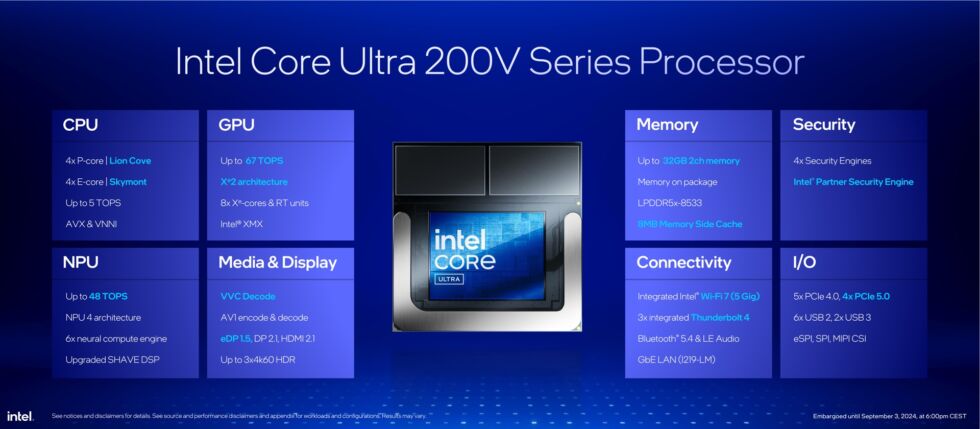
Intel
The most significant numbers in today’s update are actually about battery life: Intel compared a Lunar Lake system and a Snapdragon X Elite system from the “same OEM” using the “same chassis” and the same-sized 55 WHr battery. In the Procyon Office Productivity test, the Intel system lasted longer, though the Qualcomm system lasted longer on a Microsoft Teams call.
If Intel’s Lunar Lake laptops can match or even get close to Qualcomm’s battery life, it will be a big deal for Intel; as the company repeatedly stresses in its slide deck, x86 PCs don’t have the lingering app, game, and driver compatibility problems that Arm-powered Windows systems still do. If Intel can improve its battery life more quickly than Microsoft, and if Arm chipmakers and app developers can improve software compatibility, some of the current best arguments in favor of buying an Arm PC go away.
-
Intel is trying to fight back against Qualcomm’s battery life advantage in Windows PCs.
Intel -
Many of Lunar Lake’s changes were done in service of reducing power use.
Intel -
Here, Intel claims a larger advantage in battery life against both Qualcomm and AMD, though there are lots of variables that determine battery life, and we’ll need to see more real-world testing to back these numbers up.
Intel
Intel detailed many other Lunar Lake changes earlier this summer when it announced high-level performance numbers for the CPU, GPU, and NPU.
Like Meteor Lake, the Lunar Lake processors are a collection of silicon chiplets (also called “tiles”) fused into one large chip using Intel’s Foveros packaging technology. The big difference is that there are fewer functional tiles—two, instead of four, not counting the blank “filler tile” or the base tile that ties them all together—and that both of those tiles are now being manufactured at Intel competitor TSMC, rather than using a mix of TSMC and Intel manufacturing processes as Meteor Lake did.
Intel also said it would be shipping Core Ultra CPUs with the system RAM integrated into the CPU package, which Apple also does for its M-series Mac processors; Intel says this will save quite a bit of power relative to external RAM soldered to the laptop’s motherboard.
Keep that change in mind when looking at the list of initial Core Ultra 200V-series processors Intel is announcing today. There are technically nine separate CPU models here, but because memory is integrated into the CPU package, Intel is counting the 16GB and 32GB versions of the same processor as two separate model numbers. The exception is the Core Ultra 9 288V, which is only available with 32GB of memory.
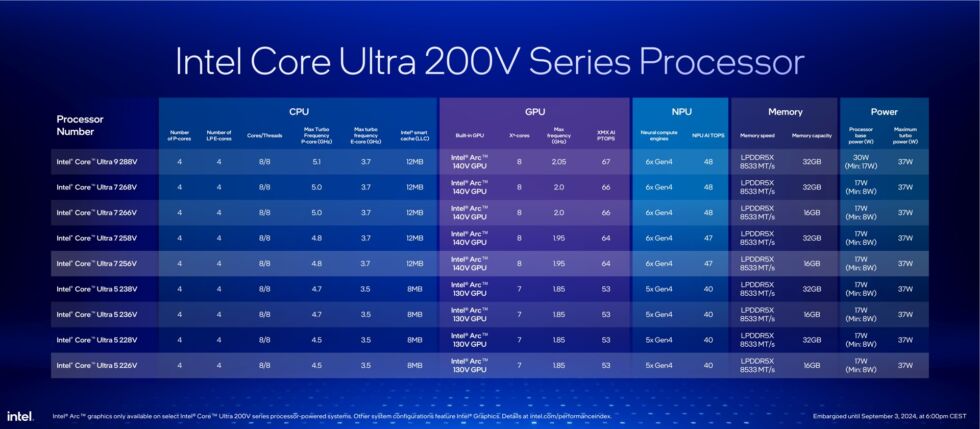
Intel
The Core Ultra 9 and 7 CPUs are all essentially the same chip: All have the same 12MB of cache, eight of Intel’s Xe cores for the integrated Arc 140V GPU, and six cores (or “neural compute engines”) for the NPU. The Core Ultra 7 chips use marginally lower clock speeds for the CPU, GPU, and NPU, but overall performance should be very similar.
The Core Ultra 5 chips still have the same number of CPU cores, but with 8MB of cache instead of 12MB. The Arc 130V GPU has seven Xe cores instead of eight, and the NPU has five cores instead of six, though Intel says it still hits the 40 trillion operations per second (TOPS) baseline necessary to qualify for Microsoft’s Copilot+ label.
All of the chips except for the Core Ultra 9 default to 17 W base power, with a minimum of 8 W (if the manufacturer configures it that way) and a maximum Turbo Boost power of 37 W. It’s slightly different for the Core Ultra 9, which has a default base power of 30 W and a minimum of 17 W.
All of the Core Ultra 200V CPUs include four P-cores based on the Lion Cove architecture and four E-cores based on the Skymont architecture. This is a step down from the core counts offered for both Meteor Lake and some earlier 13th-generation Core CPUs (the fastest Meteor Lake chops had six P-cores and eight E-cores), and many of Intel’s charts indicate that Lunar Lake’s peak multi-core performance is lower overall. Lunar Lake mainly beats Meteor Lake’s performance when power is constrained—Intel’s charts show Lunar Lake beating a Meteor Lake CPU by 10 percent when operating at a 17 W power limit, for example.
-
Some high-level details on Intel’s new E- and P-core architectures.
Intel -
Intel has removed Hyper-threading support from Lunar Lake, claiming that there are better ways to spend that silicon.
Intel -
Intel says its single-core performance can beat both Qualcomm and AMD.
Intel -
The multi-core performance picture is more complicated, because Lunar Lake has so many fewer cores than Meteor Lake (or 13th-generation Core) CPUs did. Lunar Lake comes out ahead at lower power levels, but Meteor Lake can run faster when power limits aren’t an issue.
Intel -
This kind of chart is about as close as Intel gets to admitting that Lunar Lake will be slower than Meteor Lake or AMD’s Ryzen AI HX chips, though it’s better that people will care more about its power efficiency. At roughly 20 W, Intel is claiming performance similar to Apple’s M3.
Intel
Intel’s charts were light on direct generation-over-generation performance comparisons using actual laptops, but the upshot is that this is Intel’s second CPU generation in a row where peak CPU performance will stay similar to or even regress a little compared to the previous generation. This is, arguably, a welcome course correction, since 12th-gen Core CPUs seemed to prioritize multi-core performance gains at the expense of battery life. But it’s a change from just a few years ago, when you could generally expect each new chip generation to be an across-the-board improvement from its predecessor.
The Arc GPU is a more straightforward upgrade. Intel says that its fully enabled Arc 140v GPU, the first of Intel’s graphics products to use its next-generation Battlemage architecture, will be 31 percent faster on average than the Arc GPU in Meteor Lake chips; 68 percent faster than the Adreno GPU in Qualcomm’s Snapdragon X Elite chips; and 16 percent faster than the Radeon 890M in the Ryzen AI 9 HX 370. Intel also noted that about half the games it used for testing wouldn’t run on the Snapdragon X Elite.
-
Intel is claiming roughly a 31 percent performance improvement over Meteor Lake.
Intel -
Comparing Arc’s performance to Qualcomm’s here is made more complicated by x86-to-Arm overhead and games that just won’t run on Arm PCs.
Intel -
Intel also says it’s faster than AMD’s best integrated graphics, though there’s more variability here based on the games you’re running.
Intel
Intel is launching the Lunar Lake chips several months ahead of its typical schedule—it usually announces its first batch of new laptop chips in December, and the PC companies mostly refresh their systems at CES in January. But that timeline would put Intel at risk of being the only major CPU company whose PCs didn’t qualify for the Copilot+ label during the fall and holiday shopping seasons.
Copilot+ compatibility doesn’t actually get you all that much right now, and the features still aren’t actually available on x86 PCs as of this writing—the features that do exist are currently exclusive to Qualcomm’s Snapdragon X Elite and Plus CPUs, though they ought to be enabled on Intel and AMD PCs in an update to Windows 11 24H2 later this year. But it’s a label that Microsoft is putting a decent marketing budget behind, and Intel needs all the help it can get right now; the company lost $1.6 billion last quarter, prompting a huge round of layoffs (which follows other rounds of layoffs that have happened within the last year). The company also said that it had previously undisclosed manufacturing issues with Meteor Lake, making it more difficult to meet demand.

